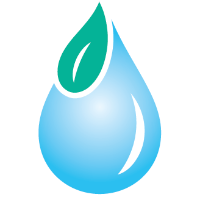Water for Food Global Institute, Daugherty

Daugherty Water for Food Global Institute: Faculty Publications
Date of this Version
5-2011
Document Type
Article
Citation
Mekonnen, M.M. and Hoekstra, A.Y. (2011) National water footprint accounts: the green, blue and grey water footprint of production and consumption, Value of Water Research Report Series No. 50, UNESCO-IHE, Delft, the Netherlands.
Abstract
This study quantifies and maps the water footprints of nations from both a production and consumption perspective and estimates international virtual water flows and national and global water savings as a result of trade. The entire estimate includes a breakdown of water footprints, virtual water flows and water savings into their green, blue and grey components. The main finding of the study can be summarized as:
The global water footprint in the period 1996-2005 was 9087 Gm3/yr (74% green, 11% blue, 15% grey). Agricultural production contributes 92% to this total footprint.
About one fifth of the global water footprint relates to production for export.
The total volume of international virtual water flows related to trade in agricultural and industrial products was 2320 Gm3/yr (68% green, 13% blue, 19% grey). Trade in crop products contributes 76% to the total volume of international virtual water flows; trade in animal and industrial products contribute 12% each. As a global average, the blue and grey shares in the total water footprint of internationally traded products are slightly larger than in the case of domestically consumed products.
Mexico and Spain are the two countries with the largest national blue water savings as a result of trade.
The global water saving as a result of trade in agricultural products in the period 1996-2005 was 369 Gm3/yr (59% green, 27% blue, 15% grey), which is equivalent to 4% of the global water footprint related to agricultural production. The global blue water saving is equivalent to 10% of the global blue water footprint related to agricultural production, which indicates that virtual water importing countries generally depend more strongly on blue water for crop production than the virtual water exporting countries. The largest global water saving (53%) is due to trade in cereal crops, followed by oil crops (22%) and animal products (15%).
International trade in industrial products can be associated with an increased global water footprint that is equivalent to 4% of the global water footprint related to industrial production.
The water footprint of the global average consumer in the period 1996-2005 was 1385 m3/yr. About 92% of the water footprint is related to the consumption of agricultural products, 5% to the consumption of industrial goods, and 4% to domestic water use.
The average consumer in the US has a water footprint of 2842 m3/yr, while the average citizens in China and India have water footprints of 1071 m3/yr and 1089 m3/yr respectively.
Consumption of cereal products gives the largest contribution to the water footprint of the average consumer (27%), followed by meat (22%) and milk products (7%). The contribution of different consumption categories to the total water footprint varies across countries.
The volume and pattern of consumption and the water footprint per ton of product of the products consumed are the main factors determining the water footprint of a consumer.
The study illustrates the global dimension of water consumption and pollution by showing that several countries heavily rely on water resources elsewhere (for example Mexico depending on virtual water imports from the US) and that many countries have significant impacts on water consumption and pollution elsewhere (for example Japan and many European countries due to their large external water footprints).
Included in
Environmental Health and Protection Commons, Environmental Monitoring Commons, Hydraulic Engineering Commons, Hydrology Commons, Natural Resource Economics Commons, Natural Resources and Conservation Commons, Natural Resources Management and Policy Commons, Sustainability Commons, Water Resource Management Commons


Comments
© 2011 M.M. Mekonnen and A.Y. Hoekstra. The Value of Water Research Report Series is published by UNESCO-IHE Institute for Water Education, in collaboration with University of Twente, Enschede, and Delft University of Technology, Delft.